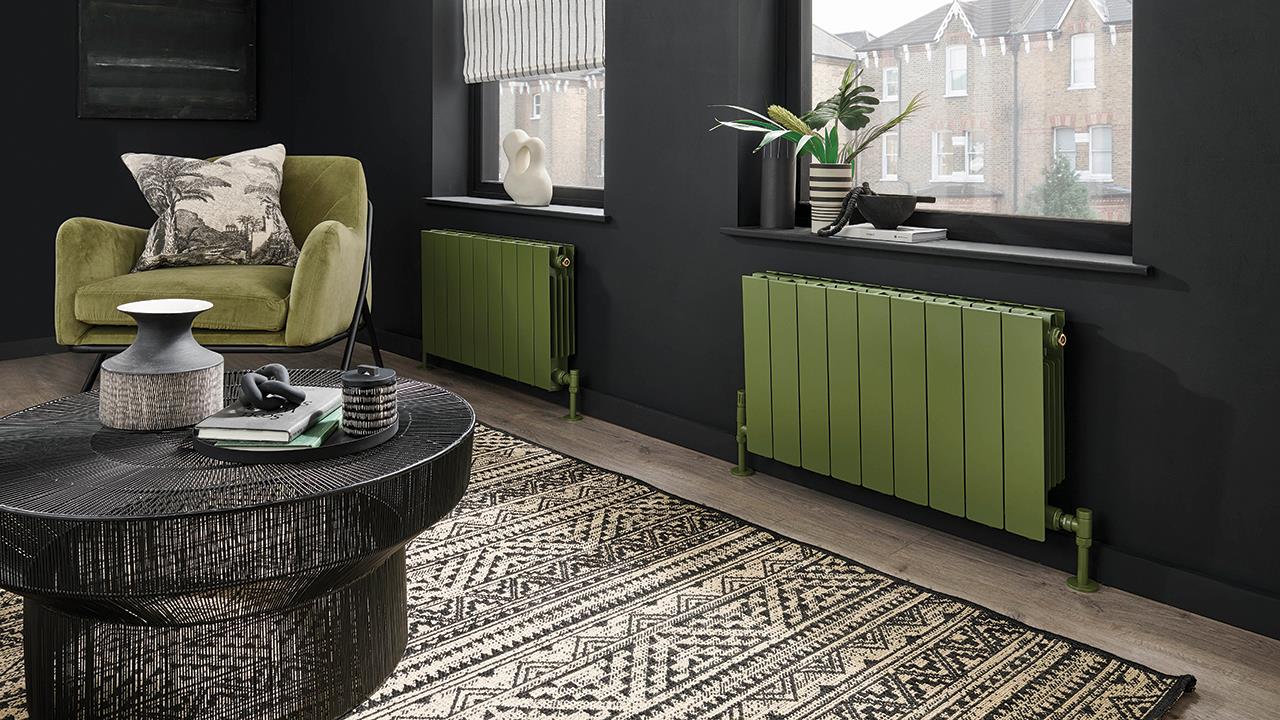

At The Radiator Company, we believe that heating isn’t just about warming a home. Of course, finding a radiator that provides the right temperature for the space is the crucial first step in ensuring end-user satisfaction and comfort, but the numerous designer radiator options available on the market can offer so much more.
Whether customers are looking to update or renovate their home interiors, or simply replace an existing radiator, upselling to a designer radiator can add impact and a new design feature to a room, delighting the customer and offering an opportunity for installers to add value to the project.
A key aspect in helping customers to navigate the options available to complement their interior scheme is understanding the different materials that radiators are manufactured from, and when to consider specifying one material over the other. Designer radiators are manufactured from a range of materials, including cast iron, steel, and aluminium, and each offers different benefits.
Cast iron
Classic, nostalgic, elegant, striking – all words that can describe cast iron radiators. This technology been heating homes since the mid-1800s, and enjoys enduring aesthetic appeal.
These time-honoured products are available in numerous designs to complement many different interior styles. For example, schoolhouse designs work well with industrial, loft style, or mid-century interiors, and models that feature ornate, Georgian and Edwardian style, floral decorative detailing, work beautifully in a period property or on a restoration project.
But while the visual appeal of these radiators is versatile enough to work in both modern and period interiors, is the material right for the application?
Cast iron takes a long time to heat up and cool down, so these radiators retain their heat long after the heating is turned off. This makes cast iron the ideal radiator material for large spaces or interiors with high ceilings. However, these radiators have a high heat capacity so will place a higher demand on the heating system to produce enough energy to heat them up.
Furthermore, cast iron is incredibly heavy, and many models cannot be wall-mounted. As such, the flooring must be strong enough to withstand the weight of these radiators, especially once filled with water. It is also important to consider access and delivery – carrying these up stairs is no mean feat.
Steel
Most designer radiators are constructed of steel, or mild steel, because this material is easier to mold into the distinctive shapes and sizes consumers are increasingly looking for.
An excellent alternative for customers looking to replicate the aesthetic appeal of cast iron is a steel, multi-column radiator. These offer end-users the same visual character with a more lightweight column construction, which means these can be wall-mounted or floor-standing.
Mild steel is more cost effective than cast iron, which makes it a popular choice for cost-conscious homeowners looking to replace several radiators at the same time.
The thermal properties of these radiators mean that they heat up far quicker than their cast iron counterparts. Like cast iron, these products are built with a sectional design but, in contrast, are available in both horizontal and vertical formats that offer huge variations in depth (number of columns), width, and height to provide the heat performance needed for each specific room. The Radiator Company’s Ancona range, for example, can be specified in up to six-column formats to meet the heat output requirements for the space.
Aluminium
Aluminium is a superconductor that makes radiators made from it highly efficient at responding to user temperature preferences and thermostatic changes. This means they heat up and cool down quickly, as required, making these a more energy efficient choice with a smaller demand placed on the heating system.
Aluminium also offers an extremely high heat output, when compared to similar-sized standard steel radiators, and is extremely lightweight. As such, installing these radiators is quick and simple, and can be specified for any wall.
Aluminium radiators are available in horizontal or vertical formats to fit any space and in a huge array of designs to suit your customer’s décor and style. They are also a good solution when working with renewable heating systems, as these models can operate at the lower flow temperatures typical of the technology, while offering a unique, statement piece.
If you'd like to keep up-to-date with the latest developments in the heating and plumbing industry, why not subscribe to our weekly newsletters? Just click the button below and you can ensure all the latest industry news and new product information lands in your inbox every week.